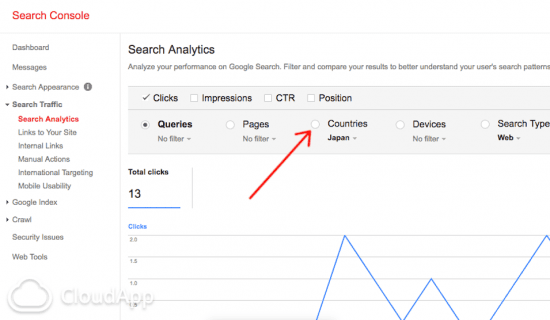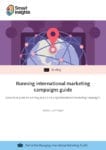Don't limit your SaaS brand - the do's and don'ts of international SEO
We live in a world of nearly 200 countries and thousands of different languages, so why should your SaaS company limit itself just to English speakers or a North American audience? Asking this question, many SaaS companies will embark on a journey to expand their international visibility, only to realize that international SEO can be a strange beast. “If you build it, they will come,” does not apply if no one can find what you have built.
Brands can find greater success within international markets if they understand how search engines, like Google index, retrieve websites for international audiences. With this understanding, your SaaS company can build a strategic approach to capturing international traffic by following international SEO best practices.
So, start studying abroad — no passport needed! — with this list of do’s and don’ts for international SEO.
Download our business Member Resource – Running International Marketing Campaigns Guide
The guide shows the key issues to focus on for the digital elements of international marketing campaigns. It also shows how integration with offline activity should be managed. It will review the key challenges, asks the key questions and lays out a practical guide to answer them when running international marketing campaigns.
Access the Running international marketing campaigns guide
Don't spread yourself too thin; do approach each localization carefully
Every single language and/or country you decide to create a localized company website for deserves individualized time and attention. You may want to start small by targeting a single country or language to expand to, focus on those efforts, and then take the lessons learned as you expand your reach further.
The last thing you want to do is try to publish 30 different sites at once without regard for best practices. This approach will result in a poor experience for users and likely a complete lack of visibility to search engines.
So, start small, focus on the details and then scale your approach as you learn more about what works and what doesn’t. Remember that it is often easier to target a language like Spanish, which is spoken in dozens of countries throughout the world, rather than targeting an individual country.
Developing a language-specific approach may, therefore, offer more efficient returns than a country-specific approach unless you are trying to directly target a single country’s market.
Don’t Rely on Auto Translators
Another critical mistake companies make - deciding to simply dump 100% of their existing copy into a translator tool and then paste this into a “localized” website. For one, translator tools will always be imperfect compared to a human translator. These programs commonly fail to recognize nuance, context or idioms present in the language.

Second, not everything translates directly from one language to the other. Otherwise, we would not have co-opted words in English like “reconnaissance,” which would translate directly from French to something like “the regaining of understanding.”
For this reason, a keyword like “best SaaS payroll tool” may have a completely different alternative in your target country, so study their search habits.
Ensure that both On-page and Off-page elements contain targeted keywords in the chosen language, including:
- H1s and other headers
- Title tags
- Meta descriptions
- Alt text
- Body content
Other things that may not translate directly are your business hours, currency and other regional-specific factors. Research schema markup tags that you can use for language/country specific pages so that search users there do not see something that confuses them, like business hours that correspond to the middle of the night.
Do Work With Someone Who Speaks the Language and Understands Regional Expectations
Poorly translated sites usually do not rank well on SERPs. So, your first step towards writing in a new language is to hire someone who speaks the language fluently. You can outsource this job to a freelancer, but you will need to check the quality of their work with someone else who is bilingual.
You are better off hiring a dedicated bilingual project manager/creative director if you are serious about creating an experience that translates well into your new target market. They should have an enough grasp on local culture and expectations of businesses to be certain that your design and language approach produces the desired effect.
For example, a website design that is successful in America may not find success in Japan. Look at Moz’s example under Myth #12 of their related article showing how the beauty company Lush has a completely different site design approach for Japanese audiences. The Japanese site trades out minimalism for dense, colorful imagery while making the chat widget more prominent.
Similarly, businesses launching services in Germany must be no-nonsense with their branding, and they must project a stellar, professional first impression if they are to be regarded on the marketplace at all. Germany also requires a fairly specific boilerplate site imprint for all business websites, else the host could face up to a €50,000 ($58,652 USD) fine. Knowing requirements like these are key to a successful international brand launch.
Don’t Take Your Domain Structure for Granted
While you are working on design and copy for your new website, you can already begin to form an international SEO strategy.
Your first order of business is to decide on a domain structure. You have several main options:
- ccTLD (Country Code Top Level Domain) — “examplesaascompany.fr”
- Provides the strongest ranking signal to country-specific search engines
- Requires you to completely rebuild your domain ranking authority almost from scratch
- Best for an all-in approach from companies seeking to run dedicated international offices
- Expensive to maintain
- Subdomain — “france.examplesaascompany.com"
- Provides a fairly strong ranking signal to foreign search engines
- Can often help share your domain authority, giving momentum to international SEO
- Less-expensive to maintain
- Used by a surprising amount of multinationals, including Apple and IBM
- Subdirectory — “examplesaascompany.com/france”
- Sends weakest ranking signal to foreign search engines
- Cheapest option with the least amount of needed hosting resources
- Often easier to structure/strategize since it can be incorporated within normal site map
- Best for small operations or businesses just starting to branch out internationally
Note that your company can also use hreflang tags to help search engines understand that a site page can also be accessed in a different language. Adding these tags to the page code can allow search engines to index the translated page based on the search user’s current country and browser settings.
An example tag for a French homepage would look like the following:
<link rel="alternate" href="http://examplesaascompany.com/fr" hreflang="fr-fr"/>
This page also needs an hreflang tag for the French page back to the English page for the search engine to be able to index properly, so always reciprocate.
Do Be Prepared to Optimize Your Approach Through Feedback
As you begin to create new pages tailored for the language/country of your choosing, you can use analytics data to determine areas of needed improvement or extra effort. Google’s Analytics tools, for example, can reveal data on search volume and trends from certain countries or languages. It can also reveal the pages that are most popular by language/region.
You should also continually verify your organic search visibility using available tools, like Google Search Console and SEMRush.

Don’t be frustrated if you fail to appear organically at first! You can verify you did everything right by checking Moz’s checklist for international SEO. Even if you do accomplish all of the recommendations, organic rankings can take weeks to improve depending on the market and the keyword competitiveness.
A Successful International SEO Strategy Looks at the Long Term
As your company grows and your international audience grows alongside it, you will need to regularly revisit your SEO strategy. Try accomplishing things like the following tasks monthly or quarterly:
- Flesh out your international language pages to have more depth and cultural context.
- Review your technical SEO aspects to ensure you have the proper meta-tags that serve as signals for search engines.
- Take note of analytics data revealing popular pages, keyword use and inbound traffic sources.
- Differentiate your global SEO strategy from your operations on home soil by making your international pages more unique and contextualized.
- Review word choice and phrasing with a native speaker.
Just like running a SaaS platform, finding SEO success on the international circuit is an ongoing process. Treat it like a full-time project, return to it continues to make improvements, and above all else make it your goal to truly, meaningfully connect with customers abroad.
Only when you commit to making their experience great can you be seen as a true international partner — someone who is trusted just as much abroad as they are back home.

Thanks to Nick Sawinyh for sharing their advice and opinion in this post. Nick is Product Manager at
Seomator. He is a Proud father, husband, and corgi-owner. I've been working in SEO Industry for more than ten years now. You can follow him on
Twitter or connect on
LinkedIn.






 Thanks to Nick Sawinyh for sharing their advice and opinion in this post. Nick is Product Manager at
Thanks to Nick Sawinyh for sharing their advice and opinion in this post. Nick is Product Manager at 


